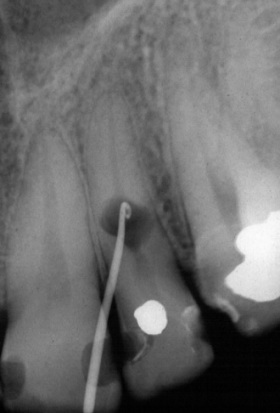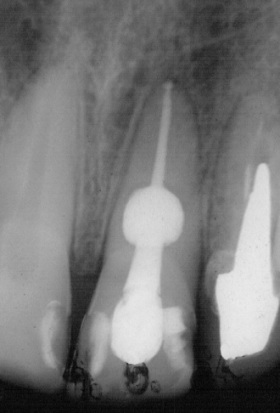Internal resorption - Follow-up & prognosis




Internal inflammatory root resorption always involves the root canal that is the site of this resorption. In active resorptions the coronal pulp is infected and usually necrotic whereas the apical root canal is vital. In old, untreated internal resorptions the whole root canal is often necrotic and apical periodontitis can also be diagnosed. The controls are planned based on the size of the resorption and possible presence of apical periodontitis. Usually the first control is taken one year after filling the resorption. As in cervical resorption, very little is known about the long-term prognosis of treatment of internal inflammatory root resorptions. In large resorption, particularly when the resorption has perforated the root, the tooth structure is weakened to such extent that the possibility of tooth fracture is relatively high.